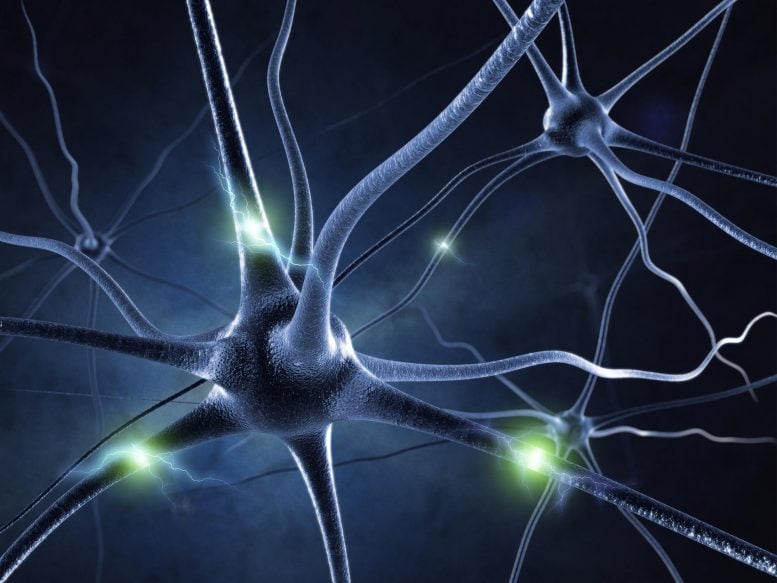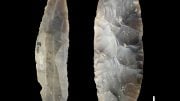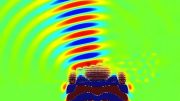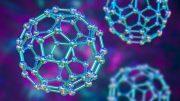
Scientists used human neurons to help solve the genetic origins of Parkinson’s disease.
Researchers at the University of Buffalo’s School of Medicine and Biomedical Sciences used human neurons to help solve the genetic origins of Parkinson’s disease. Based on a previous method in which they used induced pluripotent stem cells, their findings show that mutations disrupt the precise action of dopamine and produce more free radicals leading to Parkinson’s.
In the first study to use human neurons to investigate parkin’s role in the disease, they found that the mutations disrupt the precise action of dopamine and produce more free radicals, which in turn destroy the dopamine neurons, leading to Parkinson’s.
Their findings reveal potential new drug targets for the disease as well as a screening platform for discovering new treatments that might mimic the protective functions of parkin.
Neuron Study Key to Advancing Parkinson’s Research
The University of Buffalo (UB) researchers’ findings are based on a method they developed to generate human dopamine neurons that have parkin mutations—a dramatic advance made possible by using induced pluripotent stem cells (iPSCs).
Their breakthrough overcomes a formidable hurdle in research on Parkinson’s disease and other neurological disorders.

Jian Feng, PhD. Credit: UB School of Medicine and Biomedical Sciences
“Before this, we didn’t even think about being able to study Parkinson’s disease in human neurons,” says the study’s lead author, Jian Feng, PhD, professor of physiology and biophysics.
These neurons live in a complex network in the brain, so invasive studies have been off-limits. Yet studying them is critical to Parkinson’s research. Because animal models that lack the parkin gene do not develop the disease, researchers believe human neurons have unique vulnerabilities.
“Our large brains may use more dopamine to support the neural computation needed for bipedal movement, compared to quadrupedal movement of almost all other animals,” Feng notes.
Feng and his colleagues saw the enormous potential of iPSCs in 2007, when Japanese researchers announced that they had converted human cells to iPSCs that could then be converted to nearly any cells in the body, mimicking embryonic stem cells.
“This new technology was a game-changer for Parkinson’s disease and for other neurological diseases,” he says. “It finally allowed us to obtain the material we needed to study this disease.”
Parkin Mutation Disrupts Control of MAO Levels
During their study, UB researchers reverse-engineered human neurons from skin cells taken from four subjects: two with a rare type of Parkinson’s disease caused by the parkin mutation and two healthy control subjects.
“Once parkin is mutated, it can no longer precisely control the action of dopamine, which supports the neural computation required for our movement,” says Feng.
Researchers also found that mutations in parkin prevent it from tightly controlling the production of monoamine oxidase (MAO), which catalyzes dopamine oxidation.
“Normally, parkin makes sure that MAO, which can be toxic, is expressed at a very low level so that dopamine oxidation is under control,” Feng explains. “But we found that when parkin is mutated, that regulation is gone, so MAO is expressed at a much higher level.
“The nerve cells from our Parkinson’s patients had much higher levels of MAO expression than those from our controls. We suggest in our study that it might be possible to design a new class of drugs that would dial down the expression level of MAO.”
One of the drugs currently used to treat Parkinson’s inhibits the enzymatic activity of MAO and has been shown in clinical trials to slow the disease’s progress, Feng notes.
Oxidative Stress Implicated in Neuronal Death
Parkinson’s disease is caused by the death of dopamine neurons. In the vast majority of cases, the reason for this is unknown. But in 10 percent of cases, a mutation of genes, such as parkin, causes the disease.
The subjects with Parkinson’s in the UB study had this rare form of the disease.
“We found that a key reason for the death of dopamine neurons is oxidative stress due to the overproduction of MAO,” explains Feng.
“But before the death of the neurons, the precise action of dopamine in supporting neural computation is disrupted by parkin mutations. This study provides the first clues about what the parkin gene is doing in healthy controls and what it fails to achieve in Parkinson’s patients.”
Human Neurons Critical to New Drug Discovery Method
In the UB study, researchers reversed the defects resulting from parkin mutations by delivering the normal parkin gene into the patients’ neurons.
This, in turn, offers hope that the neurons may be used as a screening platform for discovering new drug candidates that could mimic parkin’s protective functions and potentially even lead to a cure for Parkinson’s. UB has applied for patent protection on the screening platform.
While the parkin mutations are only responsible for a small percentage of Parkinson’s cases, understanding how parkin works is relevant to all Parkinson’s patients, Feng notes. His ongoing research on sporadic Parkinson’s disease, in which the cause is unknown, also points in the same direction.
Reference: “Parkin controls dopamine utilization in human midbrain dopaminergic neurons derived from induced pluripotent stem cells” by Houbo Jiang, Yong Ren, Eunice Y. Yuen, Ping Zhong, Mahboobe Ghaedi, Zhixing Hu, Gissou Azabdaftari, Kazuhiro Nakaso, Zhen Yan and Jian Feng, 7 February 2012, Nature Communications.
DOI: 10.1038/ncomms1669









Be the first to comment on "Researchers Use Human Neurons to Investigate Parkinson’s Disease"